Dad texts to see how the trip is going at some point as I’m walking from my Airbnb in Saint Josse Ten Noode toward the Grand Place. My answer, looking back, is less than encouraging:
“Brussels smells like pee.”
“Well, people have been peeing on it for a thousand years.”
He’s not wrong. The Manneken Pis has been mid stream for 400 years (and I thought I had a bladder) and for centuries before that it was “gardez l’eau” from an upper window. Brussels is not the easiest place in the world to like. It is a bureaucratic town that clears out in the evening. The number of times since the trip that different people have used the phrase “The Ottawa of Europe” to describe it to me is startling. In some cases they weren’t even Canadian.
When travelling, you want to try to be positive, so putting this thought out of my head, I ambled along through bustling groups of tourists, instagramming along with them. It is in the nature of the tourist focused district to be reductive and sure enough every fourth store sold waffles and every fifth store sold chocolate. It took only a moment to realize that every sixth store sold beer and the dawning realization came upon me: “Oh, I’ve been rooked.”
I’m not referring to the quality of the beers on offer, lest you think I’ve come unmoored. It is the depth, complexity, and overwhelming success that the brand of “Belgian Beer” has on a uniform basis. Consider a moment that the Belgian Brewers website has put together a package of Belgian Beer Emojis. As a guild and marketing entity, how far along do you have to be before that even pops up on your radar? Further along than us, at any rate.
Coming from Canada, a country so large as to make a true national brewer’s guild logistically improbable, I find European beer culture fascinating. For one thing, Canada’s craft brewing starts around 1982 and is more or less a direct rebuttal to the increasing consolidation of brewing in the hands of a few very large companies. There’s no middle ground to begin with, and whether it’s Waterloo in K-W borrowing from the Reinheitsgebot, or Horseshoe Bay borrowing from the UK, it’s a from scratch proposition.
In Europe, there wasn’t a dearth of mid-size brewing entities. In Belgium, beer culture simply continued to exist. Sure, the claim of direct medieval descent of some brands may be spurious (Dubbel is from the 1850’s. Tripel is from the 1930’s. No one was brewing Pilsner in 1366, Stella.) but that’s not important to the brand. There’s a little Romance to iconoclastic products served in individual glassware. Rochefort 8 may be from 1955, but look at the label and look at the glassware. There’s the implication of an older tradition and of sophistication.
I remember in 1996, my mom took me along to Monte’s, a cigar bar in Kingston, Ontario to see the new Belgian beer taps. At the time, the Oland Specialty Beer Company (Labatt owned and newly introduced by their Interbrew overlords) had brought in Stella Artois, Leffe, Hoegaarden, and Belle-Vue Kriek and Framboise. At the time, it was revelatory. Stella Artois’ elaborate pouring ceremony, the heft of the hexagonal Hoegaarden tumbler. Raspberries? In beer? That’ll blow a Canadian teenager’s mind in 1996. Most of the people involved with that Oland project are now Knights of the Brewer’s Paddle, a designation awarded by the Belgian Brewer’s Guild. So is Carlos Brito, as of last week. You may rightly be upset with AB InBev’s conduct, but Interbrew really pushed things forward in Canada in the 1990’s.
It’s just that popping my head into the shops in the area surrounding the Grand Place, I can’t help but notice how same-y the selection is everywhere; As though there had once been a list of approved Belgian beers that no one has updated since the mid 2000’s. Michael Jackson’s Great Beers of Belgium is that list, and looking at the selection in the dusty shop windows it feels like no one has come along with the gravitas to approve new additions to the canon; it is stuck in amber.
But, I’m not here to see dusty bottles. I’m here to see Brussels. On the way downtown, I fortified myself for the afternoon at A La Mort Subite.
If the Belgian Beer brand is based on a cafe culture, then A La Mort Subite is part and parcel of that experience. Founded in 1928, its high ceilings and grand staircase belie a main room in which the furniture is held together largely by patina and attitude. I’m excited to try Faro, because frankly, I’ve never had one. The conversation around Lambic and Gueuze in Ontario is dominated by Cantillon, and for good reason. Cantillon’s products are sharper and more impactful. The extreme of flavour is a fine way to draw in drinkers being introduced to the concept. Faro is a sweetened lambic that typically uses brown sugar, and probably more representative of what people might have drunk in cafes a century ago. After all, they had no need of introduction to something with which they had grown up.
Now, personally, I had always wondered how you could drink a substantial amount of Lambic, and the answer is Faro. I suppose the equivalent terminology from cider production would be “backsweetened.” The aroma is not barnyard so much as browning windfall apples starting to wither. There’s a spiciness on the palate under the sweet juice, leaving you to wonder how much of the association is ester and how much is acid and sweetness. Faro is not in MJ’s list. It certainly wouldn’t travel well, and is therefore less exportable and less important to a global brand. It is probably helpful to think of it as the mild end of the Lambic spectrum. I will recall the apple character when drinking St. Peter’s Mild at the Jerusalem Tavern in London the next week. Not so different, really. Some convergent evolution.
I am drinking it with a Tartine du Fromage Blanc. Enormous slices of bread with Fromage Blanc, essentially the consistency of cream cheese, but without the salt, whole green onions and radishes to garnish. I ask the waiter how long they have been serving it like this. He simply shrugs, the gesture taken to mean since time immemorial. He says that it is a summer dish, that seasonality is important. It is an odd dish in that the green onion and radish dominate. The Faro is replaced by the house Gueuze at some point and the pungency and heat of the radish linger, making the beer more substantial.
Out and back into the sun. The going is harder underfoot than I’ve anticipated. If you ever hear about wild beers, you will hear “the Brussels river valley,” but until you’re on the ground you forget that valleys mean hills, and I am not in prime trudging shape. Through crowds of tourists and out towards Stalingrad, the wide tree lined avenue full of restaurants of disparate world cuisines.
Brussels is more diverse than you would suppose based on the brand of Belgian Beer. In practice, Belgium occupies one of Europe’s most frequently invaded territories. It has been influenced in the long term by Italian traders, Spanish occupancy, Austrian rule, French liberation, German plunder, and its own Post Colonial Congolese population. In the neighbourhood that I am staying in, Saint Josse Ten Noode, there are disparate immigrant groups; Turkish, Bulgarian, Moroccan. One supposes that as climate change takes hold, that diversity will increase. Judging by the men lining the benches outside Sint-Joostkerk in the early August evening trying to catch a breeze, it already has taken hold.
The diversity is surprising, and not something I have seen mentioned frequently. Approaching Cantillon, google maps is displaying the high points of the scenery. There are churches and mosques. Apparently, Brussels is 25% Muslim. Eoghan Walsh, the blogger behind Brussels Beer City, will later explain to me that the next neighborhood over is Molenbeek, which has ghettoized and is periodically referred to as the “croissant pauvre.” The juxtaposition is striking. Here is Cantillon, the champion of Lambic and Gueuze throughout the world, founded in 1900, in many ways the keeper of the flame for a tradition. The business next door is called Cafe Africa.
The koelschip is always mentioned in a discussion of the brewery. The spiderwebs less frequently. Cantillon is staggering for other reasons. The cool waft of breeze through the attic that takes on the leafy spice of aging bales of hallertau hops is something that I won’t soon forget. Mostly, I am astounded by the antique plate and frame filter, which looks to be made out of cast iron and must require several employees to work. Perhaps the impressive thing is the care that has been taken in the maintenance of the building and equipment since 1900. The beers themselves, now too familiar to be exactly revelatory, are excellent and there is joy in watching people try a Rose de Gambrinus for the first time.
What I want is a seat. What was that place on Stalingrad? It had outdoor seating and looked just the thing. They had beers I had never heard of. That may be a difficulty with Belgian Beer. While they may be excellent, there is little novelty. When your brand is based on 1950’s cafe culture and you have encompassed that culture, there is little to add. As a historian, I can attest: There will be more history, but not quickly enough for a second edition.
Cafe Bebo helps to ease me into the contemporary. It even has beers from breweries founded this century. I order De La Senne Zinnebir and some cheese from the Orval Trappist monastery to snack on. The label says “Brussels’ People Ale.” It is 6% and balances fruity yeast ester, cereal grains and citrus hop character delicately. It’s light and refreshing for its weight, on its way towards being a classic, but for the purposes of a hot afternoon, simply a refreshment. The slab of cheese is far too large for a single beverage. I do the decent thing and pair the monastery’s cheese with its beer. There is a brief misunderstanding as I try to order an Orval and another slab of cheese is presented. I explain I want the beer and am somewhat impressed by the lack of judgment on the part of a barman who was willing to present a second enormous slab of cheese without raising an eyebrow. Five euro is five euro.
Gist is uphill and decidedly new school, and I’ve been put onto it by Eoghan. The owners are there tending bar and spinning discs, and the menu is almost all breweries from this century. De La Senne Taras Boulba is on cask, which is not the most successful format for that beer. A lot of Brussels’ new breweries cycle through the taps here; Brussels Beer Project, No Science, L’Ermitage. I ask Jenlain, the owner, if there’s anything that he thinks I absolutely need to try. De Ranke XX is that beer. It is massively more bitter than anything I will have in the country, but it is also excellent.
“The brewer at De Ranke took this beer to a brewer’s conference and the brewers said to him that no one will buy it because it is too bitter. He said “fuck you.” said Jenlain, as I began to understand the depths of the schism between the new school and old guard.
A few days later, I am out with Eoghan Walsh. One of the advantages of writing about beer is that it does tend to make the world smaller. There’s always an opposite number you can call upon for guidance. An Irish transplant, he’s also an outsider and, although I don’t know it at the time, he’s about to write a brilliant piece on climate change and lambic, which you should absolutely read. His assertion is that with fewer cool days to produce traditional lambic, there will simply be less of it and the style may disappear.
We meet at Le Coq, a pub which had been a significant anchor for the literary community in the 1970s and judging by the slightly piratical chemise of the man at the neighbouring table, still going strong in the sonnet community. It is the kind of place that offers dark wood, reasonable prices, and plenty of space to yourself; something of an old man’s bar, but a real pearl of that genre. We talk about the realities of international craft beer and the politics of the city that I have blundered into and do not quite understand. The reconciliation of the niche specialty knowledge I’ve got and the everyday life is difficult.
I have seen people at outdoor cafes drinking Duvel at 9 AM, but it doesn’t smack of sophistication to me. Is that widespread? I have so many questions, but the one that he’s most able to answer is “do people actually drink Lambic?” We’re off to a second pub that serves Boon Gueuze. It comes in stone pots and I’m gobsmacked. “Wait, they still serve it in stone pots?” We’re off to A La Becasse.
We’re drinking a jug of Timmerman’s Zoete Lambic. It’s young, it’s mild, it has that apple character. Yes, there is barnyard, but it’s gentle and subtle. If it were in an LCBO release people would sneer at it for precisely the reason that it isn’t assertive enough. Well, you’re meant to drink a jug of it, like you’re in a painting of a wedding feast. I wonder how much of the exported culture has assisted us in missing the point.
I’ve come away from Brussels feeling a lot less certain about Belgian Beer as an entity. It seems to me like the de facto canon includes things which can be easily exported and which are tied to a very specific moment in the past. The Brewer’s Guild moved into the Grand Place in 1951 and the cafe culture of that time seems crucial to what is promoted as Belgian Beer. My copy of Michael Jackson’s Great Beers of Belgium is the sixth edition, nearly ten years old at this point and it presents a problem. There will be no additional update that can contain the same level of gravitas or pronounce new entities authentic.
De Ranke XX came out in 2006, the same year that De La Senne began production. There are the Brussels Beer Project, T’Verzet, No Science, L’Ermitage, and many other new breweries which do justice to a scene which isn’t static, but rather expanding in new directions. The new school seem, at least from an outsider’s perspective, not only to have to compete against large international competitors, but also a frozen construct of what authenticity is, an idea that authentic Belgian culture ceased to expand fifty to sixty years ago.
Preservation can be important, but it seems to have locked out contemporization. In the face of an increasingly diverse population and a bunch of young innovating breweries, hanging on to an idealized 1950’s construct seems to distance the relevance of the older culture in a way that whiffs slightly of xenophobia. What I would have loved to have seen was a vibrant, inclusive beer culture uniformly pushing foward, but it didn’t feel that way on the ground. Brussels will persist in adding layers and depth to its story as it always has, but “Belgian Beer” at least as exported seems to risk becoming dated and stale without a re-examination of what constitutes its makeup.
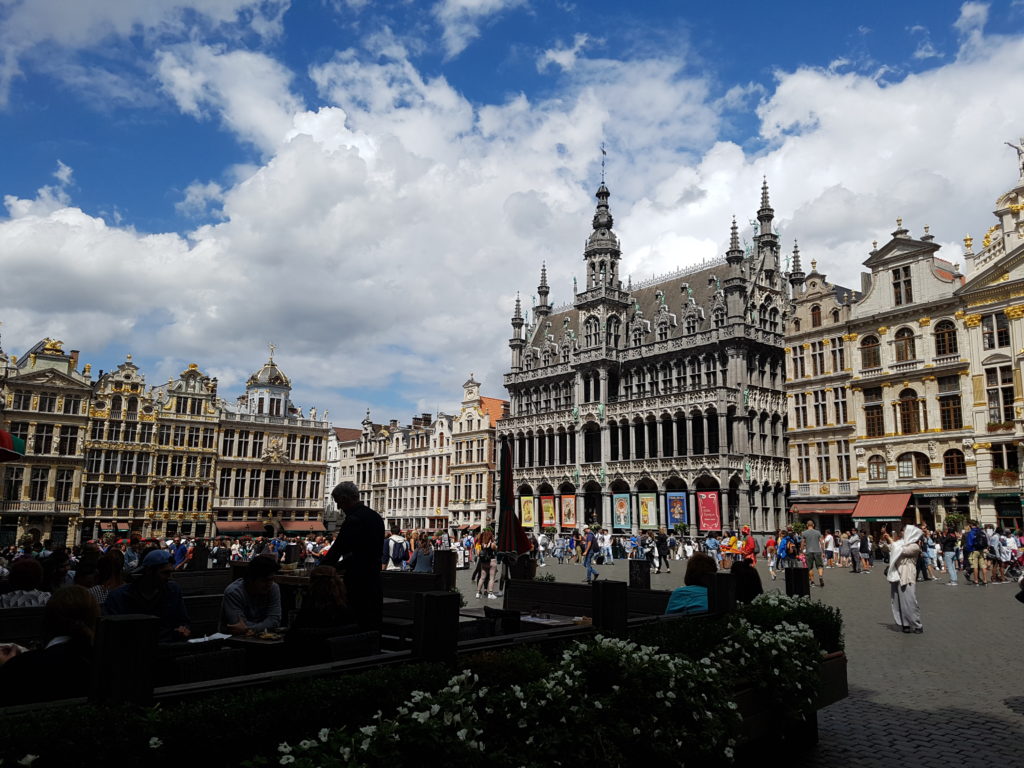
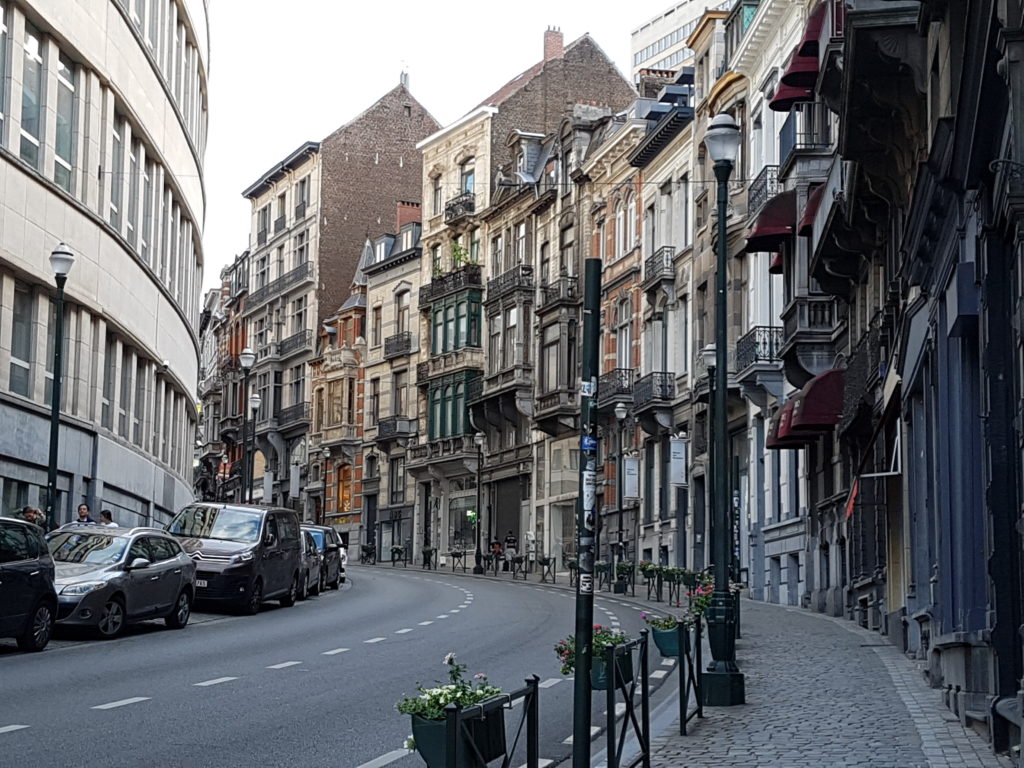
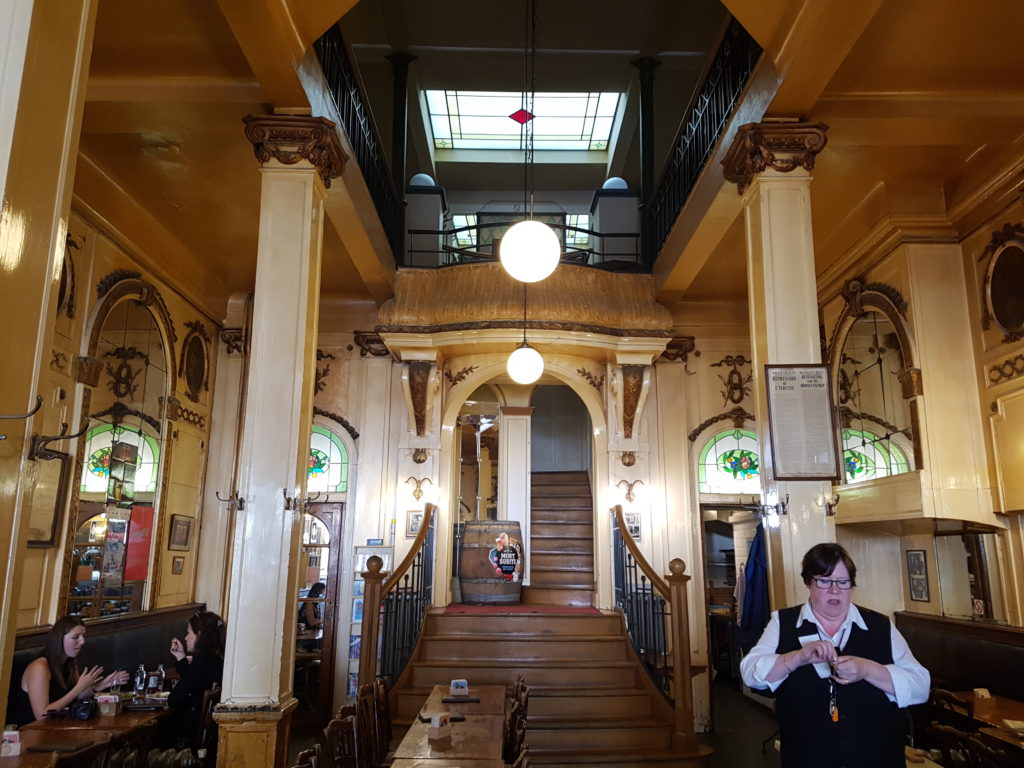
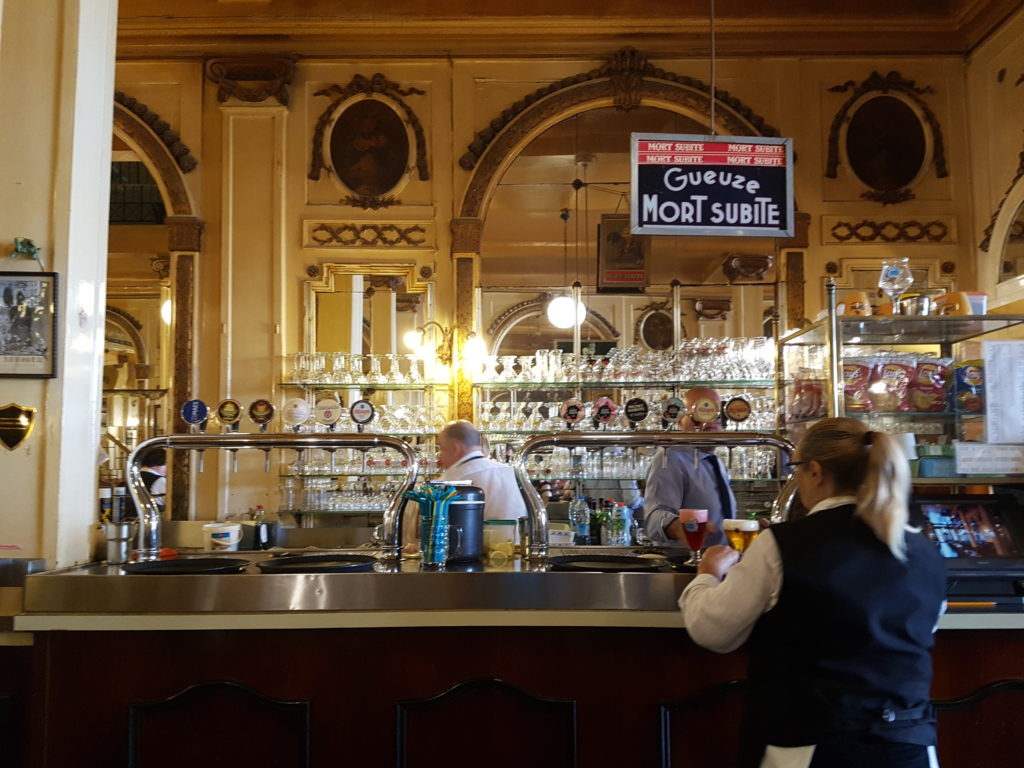
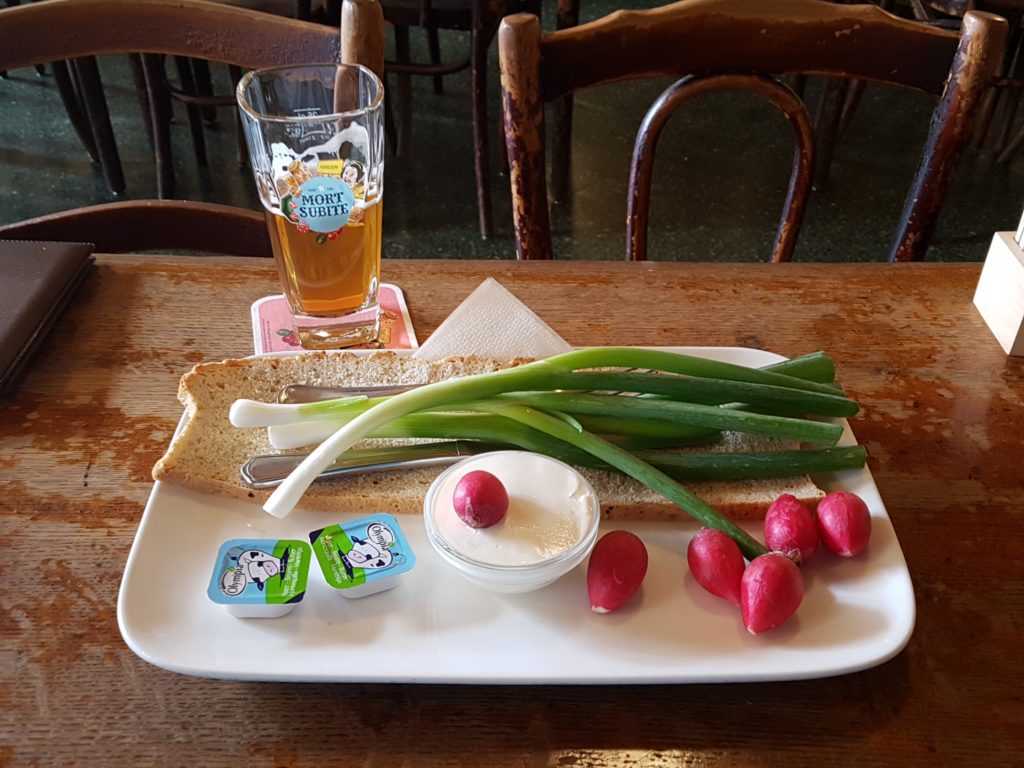
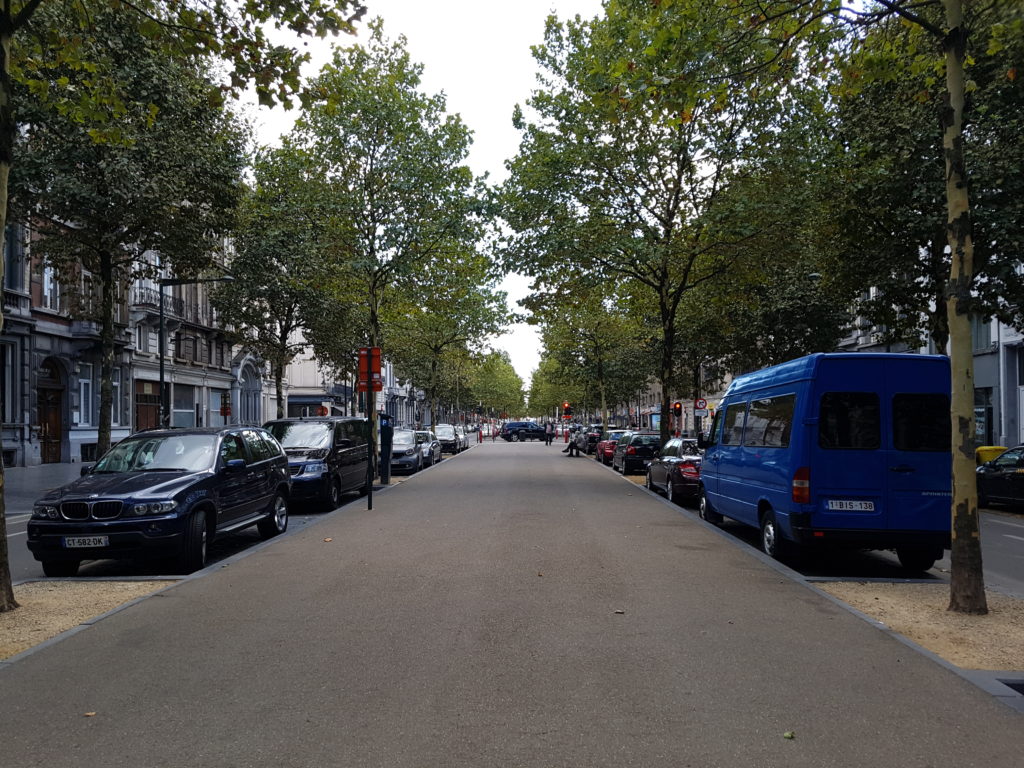
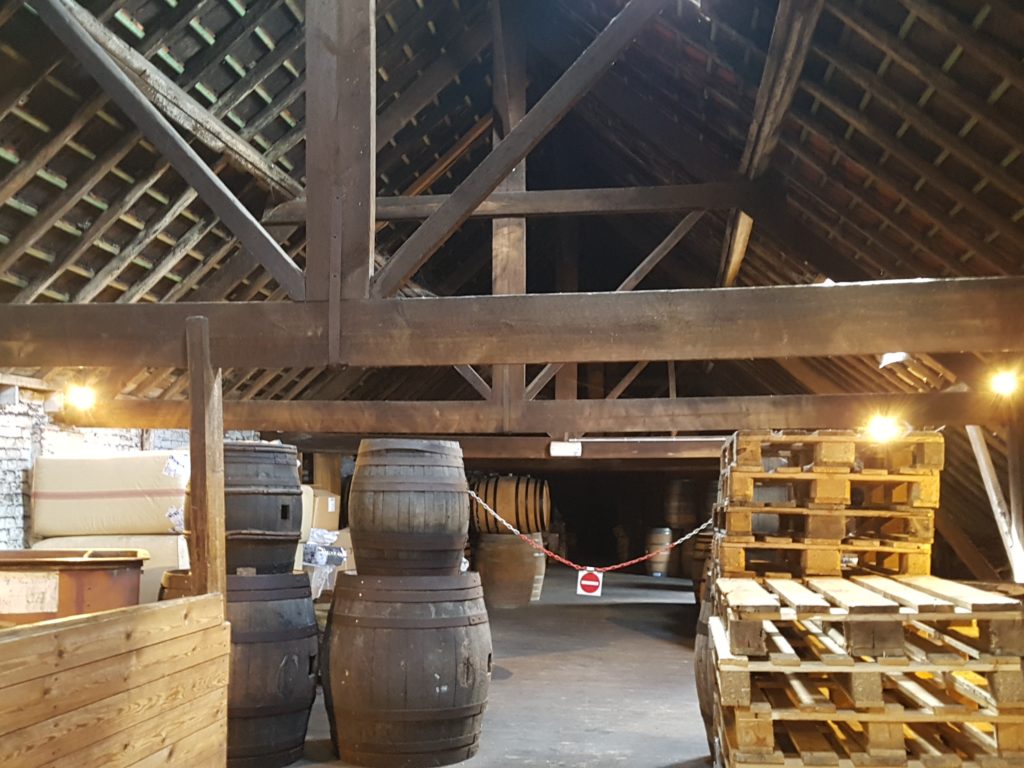
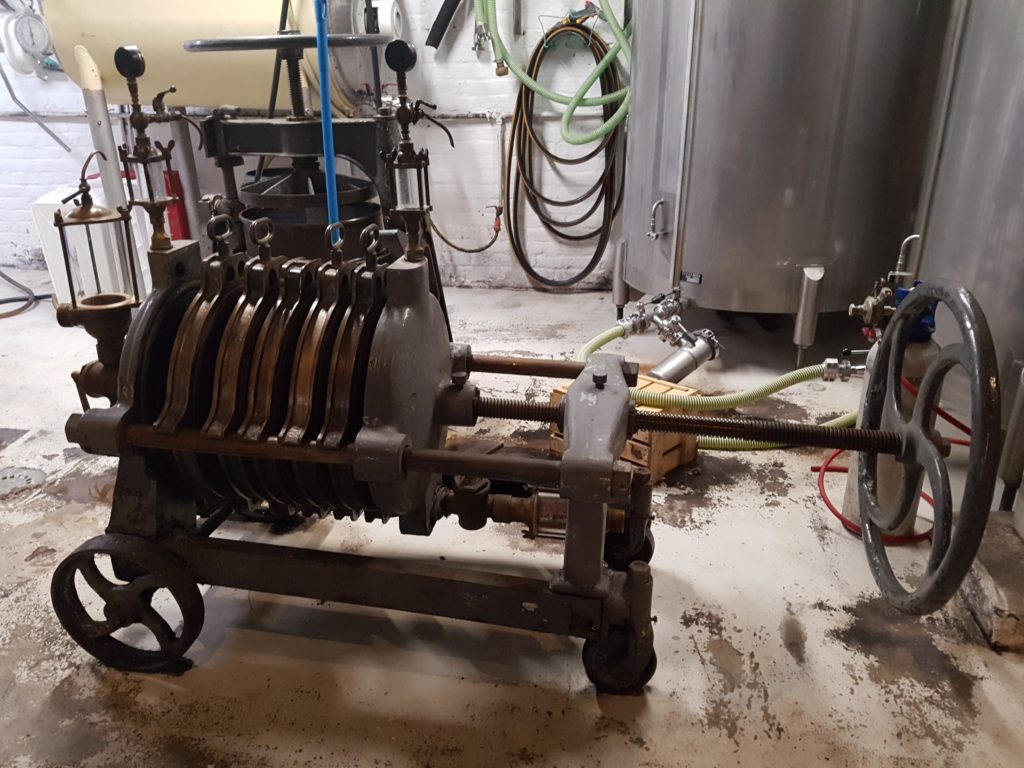
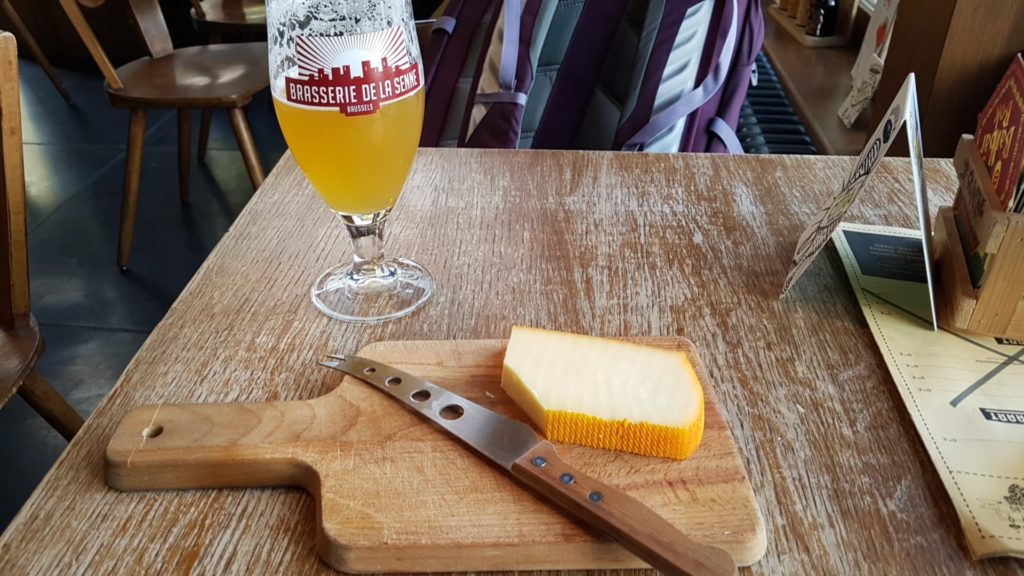

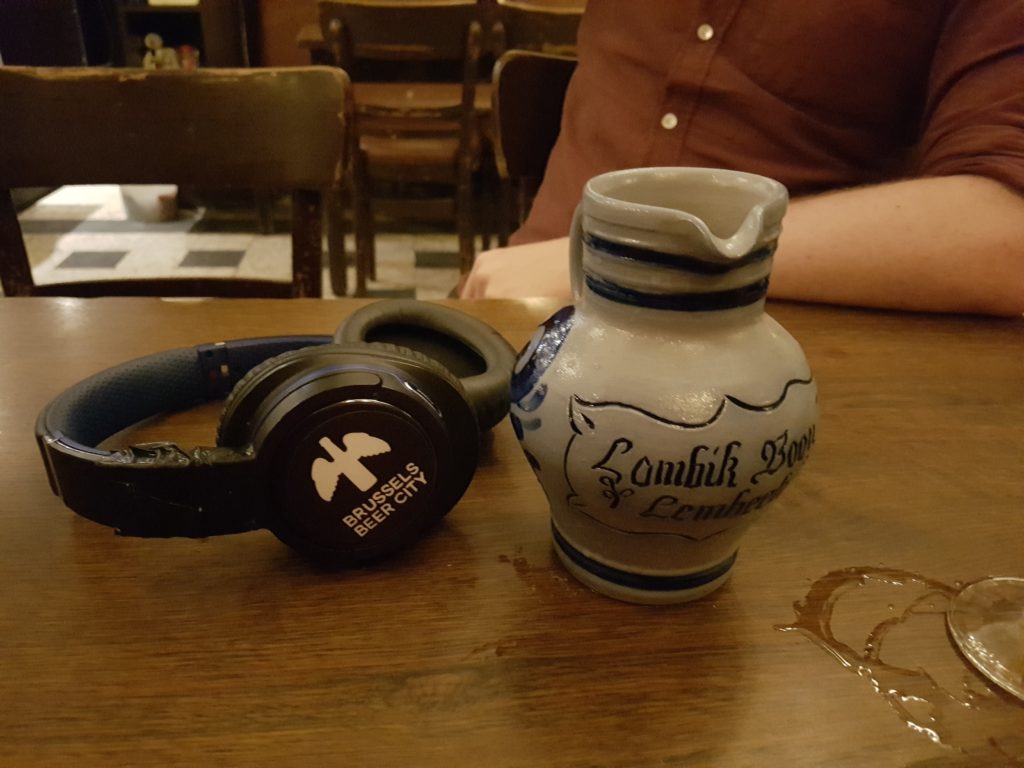
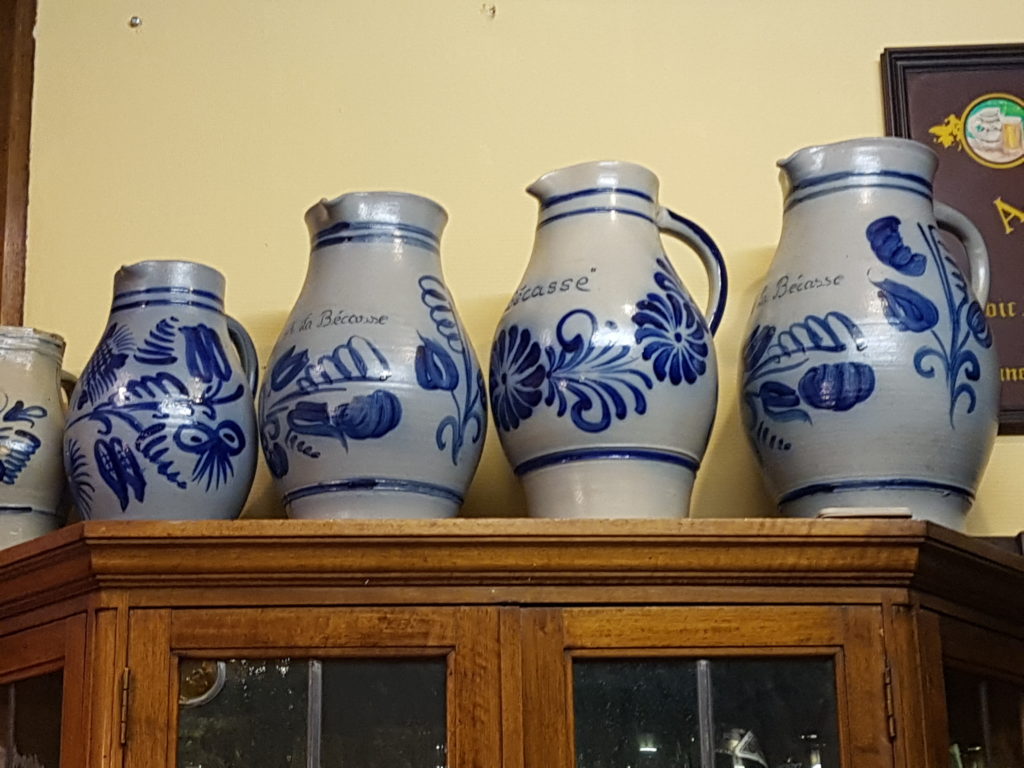

An interesting piece – even for someone like me who has visited Brussels many times, mostly on beer-related business. I find Tim Webb/Joe Stange’s excellent Good Beer Guide Belgium the place to go for beer/brewery news and information as well, of course, for news on bars. It makes every attempt to critically analyse what’s new and what’s not so new.
I have talked to Joe and did so through the trip when I had questions.
I do hope he doesn’t take it hard what I have said about Michael Jackson. There was a time very early on when you could have disproportionate influence. Believe me, I know. I’m in the same market as Stephen Beaumont. I think being an early adopter sets one up for a lot more legacy than writing a current guide. Believe me. I write one.
I did have fun though, and laterally would suggest Joe and Tim’s book to just about anyone. I think for me it was helpful to go in a little more blind. Hard to know what you think when you know what other people think.
yeah Jpe’s around Brussels in 80 beers and the companion book for Bruges are both always in suitcase when travelling to Belgium. Also working through the 100 Belgian beers to try before you die. Whilst I have a copy of MJs book I don’t think I’ve done more than skim through it; having been well educated in belgian beer by the proprietors of Bitter Virtue well before I’d even heard of Michael Jackson.
Looks like you went o an interesting cross-section of drinking establishments whilst perhaps missing (or not chronicling?) some of the “destination” bars
I went to the Delirium Monasterium.
I don’t feel like I need to go back there. Or talk about it much. The list is impressive, but the overall vibe was a little rushed.
If you’ve liked XX Bitter then XXX is the next step. Made for export to the USA and even hoppier – but well balanced and quite drinkable.
Pingback: Your “What I Did On My Summer Vacation” And Other Beery News Update – Read Beer